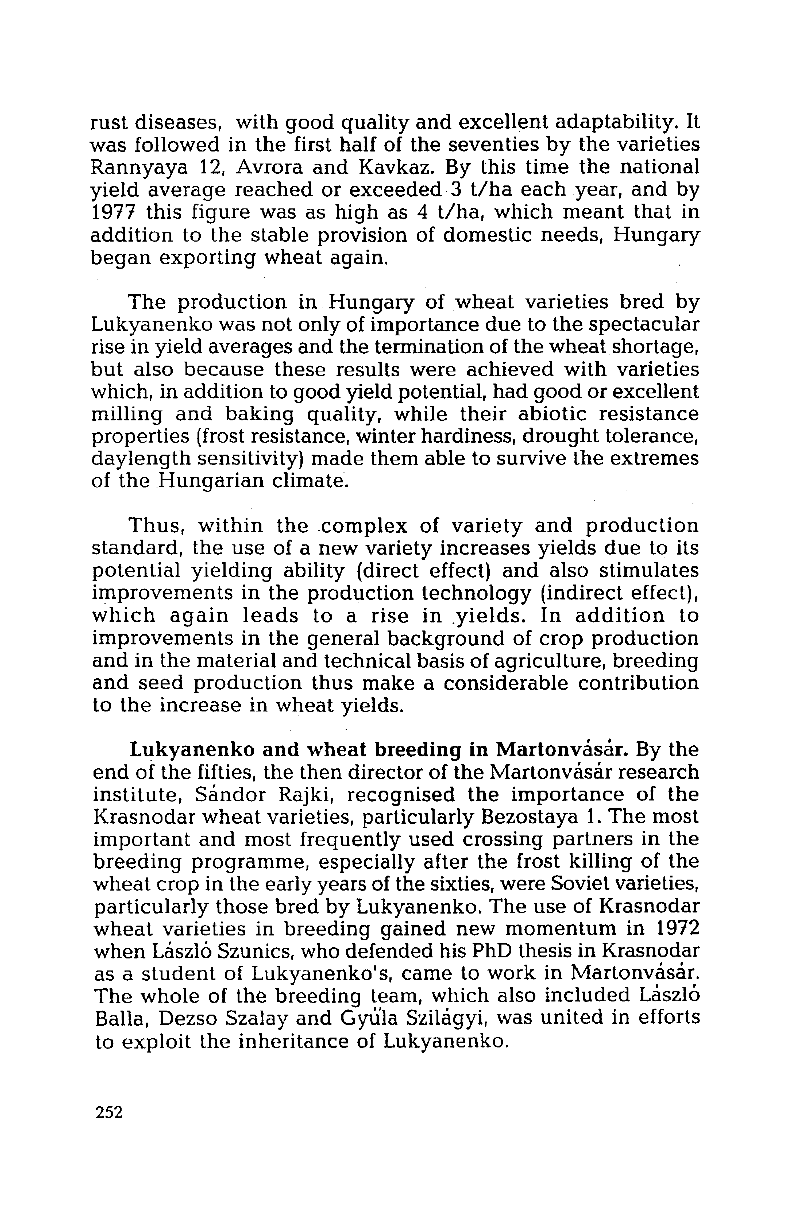

rust diseases, with good quality and excellent adaptability. It
was followed in the first half of the seventies by the varieties
Rannyaya 12, Avrora and Kavkaz. By this time the national
yield average reached or exceeded 3 t/ha each year, and by
1977 this figure was as high as 4 t/ha, which meant that in
addition to the stable provision of domestic needs, Hungary
began exporting wheat again.
The production in Hungary of wheat varieties bred by
Lukyanenko was not only of importance due to the spectacular
rise in yield averages and the termination of the wheat shortage,
but also because these results were achieved with varieties
which, in addition to good yield potential, had good or excellent
milling and baking quality, while their abiotic resistance
properties (frost resistance, winter hardiness, drought tolerance,
daylength sensitivity) made them able to survive the extremes
of the Hungarian climate.
Thus, within the complex of variety and production
standard, the use of a new variety increases yields due to its
potential yielding ability (direct effect) and also stimulates
improvements in the production technology (indirect effect),
which again leads to a rise in yields. In addition to
improvements in the general background of crop production
and in the material and technical basis of agriculture, breeding
and seed production thus make a considerable contribution
to the increase in wheat yields.
Lukyanenko and wheat breeding in Martonvasar* By the
end of the fifties, the then director of the Martonvasar research
institute, Sandor Rajki, recognised the importance of the
Krasnodar wheat varieties, particularly Bezostaya 1. The most
important and most frequently used crossing partners in the
breeding programme, especially after the frost killing of the
wheat crop in the early years of the sixties, were Soviet varieties,
particularly those bred by Lukyanenko. The use of Krasnodar
wheat varieties in breeding gained new momentum in 1972
when Laszlo Szunics, who defended his PhD thesis in Krasnodar
as a student of Lukyanenko's, came to work in Martonvasar.
The whole of the breeding team, which also included Laszlo
Balia, Dezso Szalay and Gyula Szilagyi, was united in efforts
to exploit the inheritance of Lukyanenko.
252
Научная электронная библиотека ЦНСХБ









